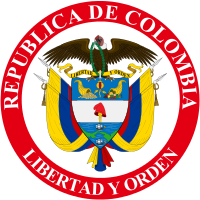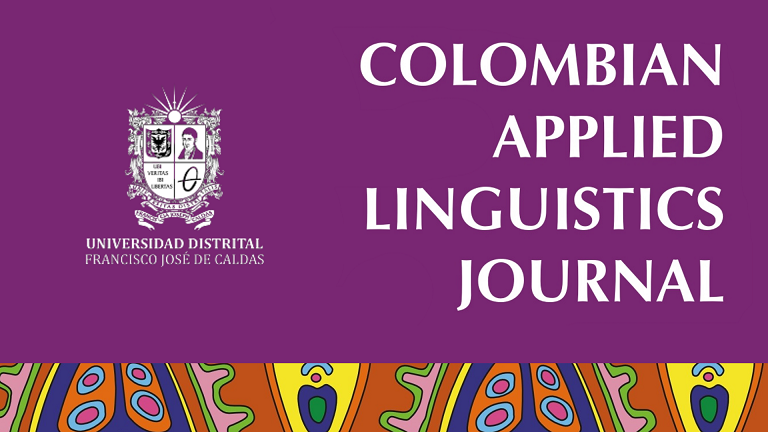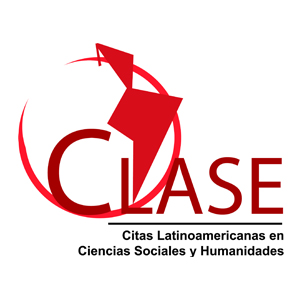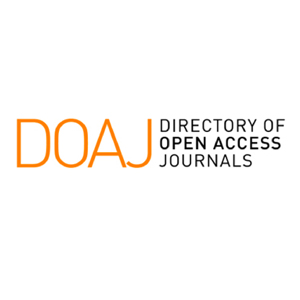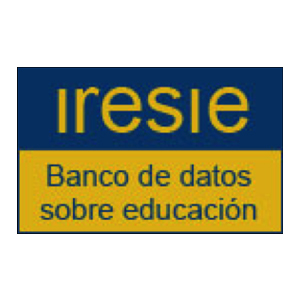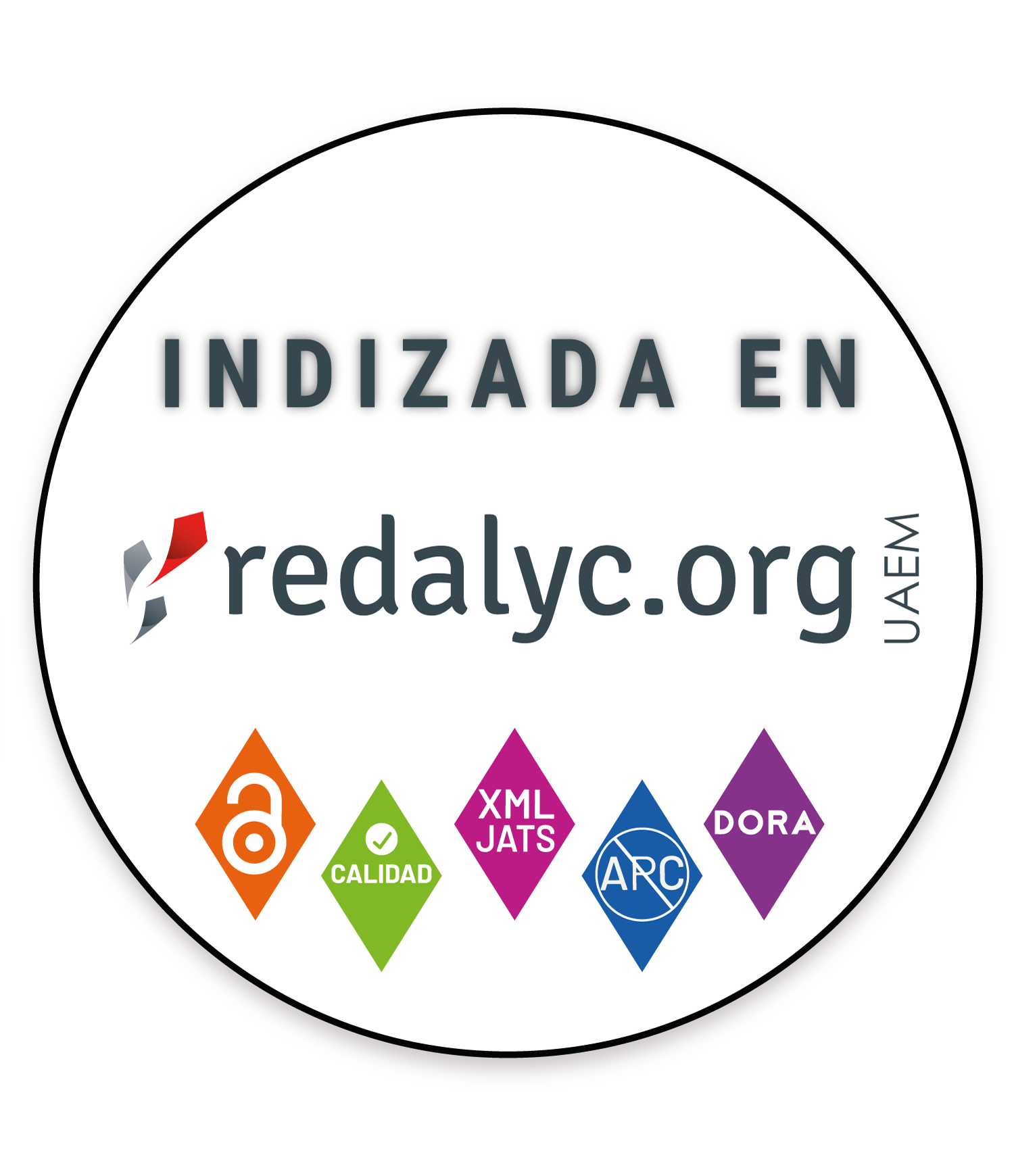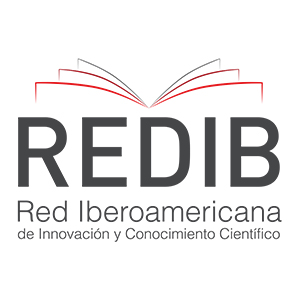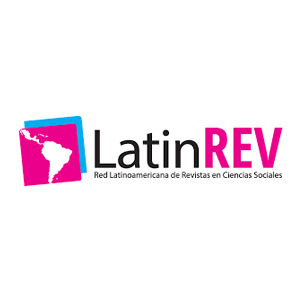Exploring Music to Learn Languages from an Intercultural Perspective
Explorando la música para aprender lenguas desde una perspectiva intercultural
Explorando a música para aprender línguas desde uma perspectiva intercultural
La cambiante e interconectada realidad social, política y económica de la era posmoderna impulsa una perspectiva de enseñanza de lenguas que aborde la dimensión intercultural de la comunicación en el aula de lenguas extranjeras. Esta necesidad sumada a la persistencia del etnocentrismo, discursos de odio y discriminación, exigen un rol activo de docentes y estudiantes como mediadores interculturales. Esta meta puede ser lograda con la integración de la dimensión intercultural en la enseñanza de lenguas. Por tanto, este estudio tuvo por objetivo integrar el enfoque intercultural de la enseñanza de lenguas mediante la exploración de los significados culturales en la música Rhythm and Blues (R&B). De esta forma, la recolección de datos incluyó una encuesta, sesiones de grupo focal, artefactos de los estudiantes y observaciones. Los datos se analizaron mediante un análisis temático y algunos temas fueron la dimensión cultural de la música R&B, las posibilidades de la música para descubrir otras culturas, la concepción de los estudiantes sobre la cultura, y la relevancia de la cultura en el aula de lenguas. Finalmente, los resultados mostraron que los estudiantes identificaron algunas manifestaciones culturales en la música R&B y su potencial para examinar otras culturas. Asimismo, los participantes descubrieron la importancia de la cultura en el aprendizaje de idiomas y su papel para mejorar sus experiencias pedagógicas.
enseñanza de lenguas, interculturalidad, música, cultura (es)
interculturalidade, ensino de línguas, música, cultura (pt)
Adorno, T. (2000). Sobre la música. Paidós.
Agudelo, J. J. (2007). An intercultural approach for language teaching: Developing critical cultural awareness. Íkala, Revista de Lenguaje y Cultura, 12(1), 185–217. https://revistas.udea.edu.co/index.php/ikala/article/view/2718
Álvarez-Valencia, J. A. (2014). Developing the intercultural perspective in foreign language teaching in Colombia: A review of six journals. Language and Intercultural Communication, 14(2), 226-244. https://doi.org/10.1080/14708477.2014.896922
Álvarez-Valencia, J. A. (2018). Visiones de lengua y enseñanza de lengua extranjera: una perspectiva desde la multimodalidad. En M. Machado (Ed.), Reflexões, perspectivas e práticas no estágio supervisionado em letras (pp. 56-72). Editora Unemat.
Álvarez-Valencia, J. A., & Bonilla, X. (2009). Addressing culture in the efl classroom: A dialogic proposal. Profile: Issues in Teachers’ Professional Development, 11(2), 151-170. https://revistas.unal.edu.co/index.php/profile/article/view/11448.
Álvarez-Valencia, J. A., & Fernández, A. (2019). Using social networking sites for language learning to develop intercultural competence in language education programs. Journal of International and Intercultural Communication, 12(1), 23-42. https://doi.org/10.1080/17513057.2018.1503318
Antón J. (2008). Multiethnic nations and cultural citizenship: Proposals from the Afro-descendant movement in Ecuador. Souls, 10(3), 215-226. https://doi.org/10.1080/10999940802347715
Arismendi Gómez, F. (2022). Formación de formadores de lenguas extranjeras en educación intercultural por medio de una comunidad de práctica. Folios, 55. https://doi.org/10.17227/folios.55-12893
Beyoncé. (2008). If I were a boy. On I am... Sasha Fierce. [Streaming audio]. https://www.youtube.com/watch?v=AWpsOqh8q0M
Beyoncé. (2011). Move your body. https://www.youtube.com/watchv=mYP4MgxDV2U
Beyoncé. (2008). Formation. On Lemonade. [Streaming audio]. https://www.youtube.com/watch?v=WDZJPJV__bQ
Bidelman, G., Hutka, S., & Moreno, S. (2013). Tone language speakers and musicians share enhanced and cognitive abilities for musical pitch: Evidence for bidirectionality between the domains of language and music. plos one, 8(4), e60676. https://doi.org/10.1371/journal.pone.0060676
Blanchet, P., & Chardenet, P. (Dirs.). (2011). Guide pour la recherche en didactique des langues et des cultures: Approches contextualisées. Éditions des archives contemporaines.
Block, D. (2014). Moving beyond “lingualism”: Multilingual embodiment and multimodality in sla. In S. May (Ed.), The multilingual turn (pp. 54-77). Routledge.
Bonilla-Tenesaca, J., Batista-Medina, I., & JiménezÁlvarez, M. (2016). La ciencia, la tecnología y la enseñanza del idioma inglés en contextos multi-interculturales del Ecuador. Santiago, 141, 721-730. https://santiago.uo.edu.cu/index.php/stgo/article/view/1582
Braun, V., & Clarke, V. (2006). Using thematic analysis in psychology. Qualitative Research in Psychology, 3(2), 77–101. https://www.tandfonline.com/doi/abs/10.1191/1478088706qp063oa
Bula J. (2016). Afro-Colombian integration in mestizo cities. City, 20(1), 130–141. https://doi.org/10.1080/13604813.2015.1096053
Byram, M. (1997). Teaching and assessing intercultural communicative competence. Multilingual Matters.
Byram, M. (2003). On being “bicultural” and “intercultural”. In G. Alred, M. Byram, & M. Fleming (Eds.), Intercultural experience and education (pp. 50–66). Multilingual Matters.
Byram, M., Gribkova, B., & Starkey, H. (2002). Developing the intercultural dimension in language teaching: A practical introduction for teachers. Consejo de Europa. http://www.lrc.cornell.edu/director/intercultural.pdf
Campbell, P., Connell, C., & Beegle, A. (2007). Adolescents’ expressed meanings of music in and out of school. Journal of Research in Music Education, 55(3), 220– 236. https://doi.org/10.1177/002242940705500304
Carreño, L. (2018). Promoting meaningful encounters as a way to enhance intercultural competences. Colombian Applied Linguistics Journal, 20(1), 120-135. https://doi.org/10.14483/22487085.11987
Castañeda, M. (2012). Adolescent students’ intercultural awareness when using culture-based materials in the English class. Profile: Issues in Teachers’ Professional Development, 14(1), 29–48.
Charles, R. (1954). I got a woman. On Single. [Streaming audio]. https://www.youtube.com/watch?v=CnI_LuCJ4Ek
Clark, J., Thiem, K., & Kang, S. (2017). Positive stereotype validation: The bolstering effects of activating positive stereotypes after intellectual performance. Personality and Social Psychology Bulletin, 43(12), 1630–1642. https://doi.org/10.1177/0146167217723324
Cooke, S. (1964). A change is gonna come. On Ain’t that good news [Streaming audio]. https://www.youtube.com/watch?v=wEBlaMOmKV4.
Cunin, E. (2003). Identidades a flor de piel. Arfo Editores.
Fernández, A. (2017). Intercultural Communicative Competence in a Social Networking Site for Language Learning [Master’s thesis]. Universidad del Valle.
Fernández, A. (2019). Intercultural components in the multimodal structure of a language learning website. Profile Issues in Teachers’ Professional Development, 21(1), 59-74. https://doi.org/10.15446/profile.v21n1.69951
Fubini, E. (2004). Música y lenguaje en la estética contemporánea. Alianza.
García, I., & Juan, A. (2015). The use of rhymes and songs in the teaching of English in primary education. Docencia e Investigación, 25(2), 83-101.
Geertz, C. (1973). The interpretation of cultures. Basic Books.
Gillespie, R., Russell, J., & Hamann, D. (2014). String music educators’ perceptions of the impact of new string programs on student outcomes, school music programs, and communities. Journal of Research in Music Education, 62(2), 175–187. https://doi.org/10.1177%2F0022429414531987
Giménez, G. (2000). Identidades étnicas: Estado de la cuestión. En L. Reina (Coord.), Los retos de la etnicidad en los Estados–nación del siglo xxi. Ciesas/ini/ Miguel Ángel Porrúa.
Gómez, L. (2015). Critical intercultural learning through topics of deep culture in an efl classroom. Íkala,
Revista de Lenguaje y Cultura, 20(1), 43-59. https://doi.org/10.17533/udea.ikala.v20n1a03
Góngora-Mera, M. (2019). The ethnic chapter of the 2016 Colombian peace agreement and the afro-descendants’ right to prior consultation: A story of unfulfilled promises. The International Journal of Human Rights, 23(6), 938-956. https://doi.org/10.1080/13642987.2018.1562920
González de Pérez, M. (2012). Los gitanos y su lengua. En C. Patiño Rosselli, & J. Bernal (Comp.), El lenguaje en Colombia. Tomo i: Realidad lingüística de Colombia (pp. 738-757). Instituto Caro y Cuervo.
González, M. (2017). Diferencias culturales en el mundo global: Cuestiones irresueltas para los pueblos indígenas de América Latina. Folios, 30, 75-88. https://doi.org/10.17227/01234870.30folios75.88
Griffee, D. (1995). Songs in action. International Book Distribution.
Guerrero, J., & Soler, S. (2020). Representación de los indígenas en las leyes generales de educación de Colombia. Folios, 52. https://doi.org/10.17227/folios.52-9559
Hallam, S. (2010). The power of music: Its impact on the intellectual, social and personal development of children and young people. International Journal of Music Education, 28(3), 269–289. https://doi.org/10.1177/0255761410370658.
Henao, E., Gómez, J., & Murcia, J. (2019). Intercultural awareness and its misrepresentation in textbooks. Colombian Applied Linguistics Journal, 21(2), 179–193.
Hernández-Sampieri, R., Fernández-Collado, C. & Baptista-Lucio, P. (2014). Metodología de la investigación (sexta edición). McGraw-Hill.
Hinkel, E. (1999). Culture in second language teaching and learning. Cambridge University Press.
Ho, S. (2009). Addressing culture in efl classrooms: The challenge of shifting from a traditional to an intercultural stance. Electronic Journal of Foreign Language Teaching, 6(1), 63-76.
Hoff, H. (2019). Fostering the “intercultural reader”? An empirical study of socio-cultural approaches to efl literature. Scandinavian Journal of Educational Research, 63, 443–464.
Hooker, J. (2008). Afro-descendant struggles for collective rights in Latin America: between race and culture. Souls, 10(3), 279-291. https://doi.org/10.1080/10999940802347764
Kemmis, S., & McTaggart, R. (1988). The action research planner (third ed.). Deakin University Press.
Kramsch, C. (1998). Language and culture. Oxford University Press.
Kramsch, C. (2003). Teaching language along the cultural faultline. In D. Lange, & R. Paige (Eds.), Culture as the core: Perspectives on culture in second language learning (pp. 19-35). Information Age Publishing.
Kress, G. (2000). Multimodality: Challenges to thinking about language. tesol Quarterly, 34(2), 337-340.
Liddicoat, A. J. (2008). Pedagogical practice for integrating the intercultural in language teaching and learning. Japanese Studies, 28(3), 277–290. https://doi.org/10.1080/10371390802446844
Liddicoat, A. J., & Scarino, A. (2013). Intercultural language teaching and learning. Wiley-Blackwell.
Liddicoat, A., Papademetre, L., Scarino, A., & Kohler, M. (2003). Report on intercultural language learning. Commonwealth of Australia.
López, N., Moya, M., & Bravo, R. (2021). La relación música-lengua materna en los principios metodológicos de Edgar Willems y Shinichi Suzuki. Folios, 54. https://doi.org/10.17227/folios.54-11512.
Márquez, E., & Valdés, E. (2006). La música palenquera (Saranga ri Palenge). Revista Anaconda, 8, 65–78.
Matos, A. (2012). Literary texts and intercultural learning: Exploring new directions. Peter Lang.
Matos, A., & Melo-Pfeifer, S. (2020). Editors’ introduction: Art matters in languages and intercultural citizenship education. Language and Intercultural Communication, 20, 289–299.
Mbilishaka, A., Ray, M., Hall, J., & Wilson, P. (2020). “No toques mi pelo” (don’t touch my hair): Decoding Afro-Cuban identity politics through hair, African and Black Diaspora. An International Journal, 13(1), 114-126. https://doi.org/10.1080/17528631.2019.1639298
McDonough, J., & McDonough, S. (1997). Research methods for English language teachers. Arnold.
McLaren, P. (2003). Life in schools: An introduction of critical pedagogy in the foundations of education (fourth ed.). Allyn and Bacon.
Meadows, B. (2016). Una revisión teórica de la enseñanza de la cultura: En honor al quincuagésimo aniversario de Asocopi. how Journal, 23(2), 148-169. https://doi.org/10.19183/how.23.2.294
Medina, S. (1993). The effect of music on second language vocabulary acquisition. fees News, National Network for Early Language Learning, 6(3), 1-8.
Mishan, F. (2005). Designing authenticity into language learning materials. Intellect Books.
Mora, C., Fuentes, T., & Wermke, K. (2011). Melodies that help: The relation between language aptitude and musical intelligence. Anglistik International Journal of English Studies, 22(1), 101-118.
Morán, P. (2001). Teaching culture: Perspectives in practice. Heinle & Heinle.
Mosquera, C., & Provansal, M. (2000). Construcción de identidad caribeña popular en Cartagena de Indias a través de la música y el baile de champeta. Revista Aguaita, 3, 98–113.
Murphey, T. (1992). The discourse of pop songs. tesol Quarterly, 26(4), 770-774.
Nieto, S. (2002). Language culture and teaching: Critical perspectives for a new century. Lawrence Erlbaum Associates.
Patel, A. (2003). Language, music, syntax and the brain. Nature Neuroscience, 6(7), 674-681.
Pérez, J. (2008) The role of the Palenge language in the transmission of Afro–Palenquero cultural heritage. Museum International, 60(3), 71-79. https://doi.org/10.1111/j.1468-0033.2008.00654.x
Petty, R., Briñol, P., & Tormala, Z. (2002). Thought confidence as a determinant of persuasion: The self-validation hypothesis. Journal of Personality and Social Psychology, 82, 722-741.
Porto, M., & Zembylas, M. (2020). Pedagogies of discomfort in foreign language education: Cultivating empathy and solidarity using art and literature. Language and Intercultural Communication, 20, 356–374.
Poyatos, F. (1992). Nonverbal communication in foreign- language teaching: Theoretical and methodological perspectives. In Evaluation and language teaching (pp. 115-143). Peter Lang.
Quintana-Arias, R. & Bello-Serna, C. (2020). Biopolítica, vida cotidiana e interculturalidad: la clase de inglés como un espacio emancipatorio que da solución al conflicto intercultural bilingüe en un colegio público de Bogotá. Colombian Applied Linguistics Journal, 22(2), 127-141.
Ramírez-Lizcano, N., & Cabrera-Tovar, M. A. (2020). efl learners’ perceptions about language learning and culture when using telecollaboration. Profile: Issues in Teachers’ Professional Development, 22(2), 95–113. https://doi.org/10.15446/profile.v22n2.82213
Ramos, B., Aguirre, J., & Hernández, C. (2012). A pedagogical experience to delve into students’ sense of cultural belonging and intercultural understanding in a rural school. how Journal, 19(1), 123-145.
Romero, C. (2008). Condiciones de vulnerabilidad social y acción colectiva de la población desplazada ubicada en Bogotá. Revista Colombiana de Sociología, 30, 27-46.
Shapiro, J., & Neuberg, S. (2007). From stereotype threat to stereotype threats: Implications of a multi-threat framework for causes, moderators, mediators, consequences and interventions. Personality and Social Psychology Review, 11, 107-130.
Spitzberg, B. & Changnon, G. (2009). Conceptualizing intercultural competence. In D. Deardorff (Ed.), The sage handbook of intercultural competence (pp. 2-52). Sage.
The New London Group. (1996). A pedagogy of multiliteracies: Designing social futures. Harvard Educational Review, 66(1), 60–92.
Villa, W., & Houghton, J. (2004). Violencia política contra los pueblos indígenas de Colombia, 1974–2004. Cecoin/oia/iwgia.
Wagner, M., & Byram, M. (2017). Intercultural citizenship. The International Encyclopedia of Intercultural Communication, 1–6. https://doi.org/10.1002/9781118783665.ieicc0043
Ware, P., & Kramsch, C. (2005). Toward an intercultural stance: Teaching German and English through tel ecol laboration. The Modern Language Journal, 89(2), 190-205. https://doi.org/10.1111/j.1540-4781.2005.00274.x
Xi, X. (2021). English teachers’ perspectives on using music in English language teaching in Thai secondary schools. Theory and Practice in Language Studies, 11(2), 145-150. https://doi.org/10.17507/tpls.1102.05
Zuluaga, B., Ortiz, M. & Vergara-Figueroa, A. (2021). Twice as hard to get half as far? Differences in sheepskin effects between Afro-Colombian and non-Afro-Colombian women. Peabody Journal of Education, 96(2), 166-176. https://doi.org/10.1080/0161956X.2021.1905352
APA
ACM
ACS
ABNT
Chicago
Harvard
IEEE
MLA
Turabian
Vancouver
Descargar cita
Citaciones

Métricas PlumX
Visitas
Descargas
Recibido: 19 de febrero de 2022; Aceptado: 13 de febrero de 2023
Abstract
The interconnected and changing social, political and economic reality of the postmodern era pushes for a perspective of language teaching that addresses the intercultural dimension of communication in the efl classroom. This need added to the persistence of ethnocentrism, hate discourses, and discrimination demand an active role of teachers and students as intercultural mediators. This goal can be achieved with the integration of the intercultural dimension in language teaching. Therefore, this study aimed to integrate the intercultural approach of language teaching through the exploration of the cultural meanings in Rhythm and Blues (R&B) music. In this way, data collection included a survey, focus group sessions, students’ artifacts and observations. Data were analyzed through thematic analysis and some themes explored were the cultural dimension of R&B, the affordances of music to discover other cultures, the students’ conception of culture, and the relevance of culture in efl. Finally, findings showed that the students identified some cultural manifestations in R&B music and its potential to examine other cultures. Similarly, the participants discovered the importance of culture in language learning and its role to enhance their pedagogic experiences.
Keywords:
culture, interculturality, language teaching, music.Resumo
A mutável e interconectada realidade social, política e econômica da era pós-moderna impulsiona uma perspectiva de ensino de línguas que aborda a dimensão intercultural da comunicação na sala de aula ele. Essa necessidade somada à persistência do etnocentrismo, discursos de ódio e discriminação demandam um papel ativo de professores e alunos como mediadores interculturais. Este objetivo pode ser alcançado com a integração da dimensão intercultural no ensino de línguas. Portanto, este estudo teve como objetivo integrar a abordagem intercultural do ensino de línguas através da exploração dos significados culturais na música de Rhythm and Blues (R&B). Deste modo, a coleta de dados incluiu uma pesquisa, sessões de grupo focal, artefatos dos alunos e observações. Os dados foram analisados por meio de uma análise temática e alguns temas explorados foram a dimensão cultural do R&B, as possibilidades da música para descobrir outras culturas, a concepção dos alunos sobre a cultura e a relevância da cultura na ele. Por fim, os resultados mostraram que os alunos identificaram algumas manifestações culturais na música R&B e seu potencial para examinar outras culturas. Da mesma forma, os participantes descobriram a importância da cultura na aprendizagem de línguas e seu papel para melhorar suas experiências pedagógicas.
Palavras-chave:
cultura, interculturalidade, ensino de línguas, música.Resumen
La cambiante e interconectada realidad social, política y económica de la era posmoderna impulsa una perspectiva de enseñanza de lenguas que aborde la dimensión intercultural de la comunicación en el aula de lenguas extranjeras. Esta necesidad sumada a la persistencia del etnocentrismo, discursos de odio y discriminación, exigen un rol activo de docentes y estudiantes como mediadores interculturales. Esta meta puede ser lograda con la integración de la dimensión intercultural en la enseñanza de lenguas. Por tanto, este estudio tuvo por objetivo integrar el enfoque intercultural de la enseñanza de lenguas mediante la exploración de los significados culturales en la música Rhythm and Blues (R&B). De esta forma, la recolección de datos incluyó una encuesta, sesiones de grupo focal, artefactos de los estudiantes y observaciones. Los datos se analizaron mediante un análisis temático y algunos temas fueron la dimensión cultural de la música R&B, las posibilidades de la música para descubrir otras culturas, la concepción de los estudiantes sobre la cultura, y la relevancia de la cultura en el aula de lenguas. Finalmente, los resultados mostraron que los estudiantes identificaron algunas manifestaciones culturales en la música R&B y su potencial para examinar otras culturas. Asimismo, los participantes descubrieron la importancia de la cultura en el aprendizaje de idiomas y su papel para mejorar sus experiencias pedagógicas.
Palabras clave:
cultura, interculturalidad, enseñanza de lenguas, música.Introduction
The Colombian social and political realities impose the need to address the intercultural dimension (ID) in education to promote equality, respect, tolerance, and coexistence. Acknowledging, studying, and validating the linguistic/cultural diversity of indigenous, palenque, creole, and other languages/cultures within the national boundaries (González, 2017; González de Pérez, 2012; Pérez, 2008) and the study of indigenous and Afro-descendant peoples' life conditions in Colombia and Latin America (Antón, 2008; Bula, 2016; Giménez, 2000; Góngora-Mera, 2019; Guerrero & Soler, 2020; Hooker, 2008; Villa & Houghton, 2004) reveal the interest to achieve a full-scale integration of different social groups. Current tensions and the global landscape have paved the way for the exploration of the role of culture in the configuration of national and social identities (Arismendi Gómez, 2022).
In ELT, this view has been reinforced by the relevance of culture in the development of areas such as science and technology (Bonilla-Tenesaca et al., 2016), literature (Hoff, 2019; Matos, 2012), arts (Matos & Melo-Pfeifer, 2020; Porto & Zembylas, 2020), multimodality (Fernández, 2017, 2019) and its role to recognize learners' social contexts (Álvarez-Valencia & Bonilla, 2009; Quintana-Arias & Bello-Serna, 2020). Nevertheless, the presence of ethnocentrism, discourses of hatred (Arismendi Gómez, 2022), and lingering discriminatory practices (Mbilishaka et al., 2020; Romero, 2008; Zuluaga et al., 2021) push for a more direct integration of the ID in ELT. Despite numerous efforts have been made to teach languages under an intercultural perspective at schools (Castañeda, 2012; Ramírez-Lizcano & Cabrera-Tovar, 2020; Ramos et al., 2012) and universities (Agudelo, 2007; Carreño, 2018; Gómez, 2015), its inclusion is still incipient (Álvarez-Valencia, 2014; Bonilla-Tenesaca et al., 2016; Meadows, 2016). Therefore, the growing need to address the ID through research, the generation of alternative approaches to explore intercultural elements in the EFL classroom, and the promotion of spaces to discuss the importance of bringing culture to everyday ELT practices are required in order to shed light on the relationship EFL-culture. Hence, this study aimed to integrate intercultural language learning (ILL) in the EFL classroom from the exploration of cultural elements in rhythm and blues (R&B) music. This article answers the following questions:
-
What cultural manifestations and relationships did the students find between R&B and culture?
-
What conception and role do the students assign to culture in the EFL classroom?
Theoretical discussion
Intercultural language teaching
Recently, the Colombian academy has included in its agenda the need to address the ID of language learning (LL) (Álvarez-Valencia, 2014; Henao et al., 2019; Meadows, 2016). The advocates of this perspective suggest that ILL thrives for facing real-time communication while dealing with intercultural misunderstanding, interpreting cultural meanings, and adopting constructive positions towards social phenomena (Byram, 1997; Wagner & Byram, 2017; Ware & Kramsch, 2005). Therefore, ILL is a view of LL in which culture receives a paramount place given the close relationship between language and culture, and intercultural mediation is one of the key goals (Ho, 2009).
ILL defines culture as a changing (Byram et al., 2002; Hinkel, 1999; Nieto, 2002), multifaceted (Liddicoat & Scarino, 2013; Morán, 2001) and social phenomenon (Álvarez-Valencia & Fernández, 2019; Kramsch, 1998). Culture includes some elements -ideas, perspectives, attitudes, meanings, symbols, practices, behaviors, and conducts- (Liddicoat et al., 2003; Morán, 2001) shared by communities within specific chronological, geographical and political contexts (Geertz, 1973; Nieto, 2002). Bonilla-Tenesaca et al. (2016) conceive culture as an ability to interpret the world as classifications and representations which are materialized through experiences, symbols, and behaviors. Liddicoat and Scarino (2013) propose that culture is the individuals' reference framework to interpret and respond to social/cultural actions which determine people's relationships.
Culture in EFL
Given the relationship language-culture, including the ID is a must for ELT (Agudelo, 2007; Kramsch, 2003). First, communicative abilities are not enough to establish successful interactions with people from different cultures (Byram, 1997; Liddicoat, 2008). Second, communication is not limited to the linguistic realm, other dimensions (multimodal/semiotic elements) require active exploration and interpretation (Álvarez-Valencia & Fernández, 2019). Viewing culture as an open and changing ensemble of tangible/intangible semiotic resources that are created through social interaction is complementary to Álvarez-Valencias (2018) notion of language as a delocalized, fluid and evolving semiotic resource that establishes complementary interrelationships with other semiotic systems. These multimodal and semiotic dimensions of communication highlight the relationship of ELT with the ID because the semiotic resources present in cross-cultural interactions make sense through the interpretation of their cultural nature and features. Interpreting cultural meanings is difficult under a verbocentric perspective of LL (Álvarez-Valencia, 2018; Block, 2014; Kress, 2000; Liddicoat, 2008). In LL, students must deal with situations coming from different cultural contexts and perspectives, therefore interpreting only linguistic elements leaves aside various meanings that are paramount to grasp whole messages (Liddicoat & Scarino, 2013). Third, a more diverse set of skills is necessary to understand the nuances that emerge in interactions. Some models aiming to explain the ID of communication have agreed on the role that affective, cognitive and behavioral factors play (Spitzberg & Changnon, 2009). Among these models, Byram's (1997) is highlighted due to its connection with ELT and its definition of specific descriptors for its skills.
Intercultural Communicative Competence
Byram's Intercultural Communicative Competence (ICC) model focuses on the skills that allow learners to establish and maintain interactions with speakers of other languages/cultures. He presents three key areas: attitudes, knowledge and skills. Attitudes mean the affective elements that learners demonstrate in real-time situations (interest, curiosity and eagerness to discover other perspectives). Knowledge describes the factual information that learners require when interacting with people, documents or situations in diverse cultural contexts. Skills are divided in three categories: skills of interpreting/relating, discovery/interaction and critical cultural awareness. These categories are related to the abilities to understand and contextualize information, situations and products from diverse cultures (savoir comprendre); use previous skills, knowledge and attitudes to discover new perspectives (savoir faire); and take personal/ critical positions towards cultural manifestations (savoir s'engager).
ICC encourages intercultural speakers with the capacity to understand the multilayered relationships among cultures/languages without leaving aside their own culture (Byram, 1997; 2003).
Music in language learning and culture
Music has been explored as a catalyst for meaningful LL (López et al., 2021). Due to the conception of music as the universal language (Mora et al., 2011), its emotional meanings (Griffee, 1995), complex structure -similar to language- (Adorno, 2000; Patel, 2003; Fubini, 2004) and close cultural relationships (Murphey, 1992), the role of music in ELT has received attention (Xi, 2021). The potential of music in LL appears in certain areas: phonology (Bidelman et al., 2013; Hallam, 2010), motivation (Mishan, 2005) and cognitive factors (Murphey, 1992; Medina, 1993). The cultural dimension of music in ELT is recognized because it portraits other people's perspectives (Mora et al., 2011) and displays one's own culture (Murphey, 1992).
Here, music is considered as a cultural product and semiotic resource. Given the cultural nature, influences and meanings that are constructed around music (Cunin, 2003; Márquez & Valdés, 2006; Mosquera & Provansal, 2000; Xi, 2021), this research stresses the cultural value of music from a multimodal view in which sounds, rhythm and lyrics constitute diverse modes of communication of a semiotic ensemble (The New London Group, 1996). Music constitutes one of the cultural products of human communities, therefore, this cultural product/symbol is a source of semiotic meanings that are communicated through social action because some elements of cultures include products, perspectives, and practices. Since music encompasses all these elements in their lyrics, messages, ideas, and shared practices (dancing, singing), it is seen here as a cultural manifestation.
Methodology
Design
Qualitative research was selected because of the detailed exploration of the participants' ideas, conceptions and voices under a naturalistic approach (Blanchet & Chardenet, 2011; Hernández-Sampieri et al., 2014). Action-research was adopted and conceived as "a form of self-reflective enquiry undertaken by participants in social situations in order to improve the rationality and justice of their own practices, their understanding of these practices and the situations in which the practices are carried out" (Kemmis & McTaggart, 1988, p. 1). Action-research is participant-focused, reflective, collaborative, transformative, and contextualized (McDonough & McDonough, 1997).
This experience centered on the students' reflection of the cultural connection between music and culture and the presence of culture in LL. The focus was placed on the students. This study was reflective, it invited learners to collaborate, to get a better view of their social realities, and to contribute alternatives for ILL, which reflects the key features of action research.
Context and participants
The study was developed at a private school in Cali1. Thirty-two eighth graders participated. Students took English lessons four hours per week. The students and their parents were informed about the research purpose and methods, then the students' parents signed a consent form to allow this research. Anonymity and confidentiality were maintained, data were used only for academic purposes and all ethical regulations were respected. Participation was voluntary.
The authors' roles were different: author one was the director of this research and author two implemented the proposal following author one's guidelines. Author two was not the teacher in charge of the group, she was an undergraduate student in her final year doing her research project, the school provided a limited permission for eight weeks (which was a limitation for this study) so she could apply her research in a class under the surveillance of a school's English teacher.
Data collection procedures
Focus group. Four focus groups sessions (with six students each) were conducted to know the students' perceptions and reflections about culture and music in LL (Annex 1). Sessions were developed out of class, lasted 28 minutes and were recorded.
Survey. A survey was used to inquire about the students' ideas about learning English, integrating R&B, and the inclusion of culture in LL (Annex 2). The survey was applied in the last session and students answered on paper.
Students' written production. Students developed a written activity per session (Annex 3). These exercises promoted reflections about culture, music and social issues. One question/topic discussed in class was addressed. These reflections were written on paper and delivered to author two. Five activities were developed, and in the last session, students presented their own songs.
Observations. Observations were carried out to identify the participants' attitudes, reactions and behaviors (Annex 4). Eight lessons were observed: one prior to the implementation of the didactic sequence, six corresponding to the implementation of the didactic proposal and another one when students completed the survey.
Data analysis
Thematic analysis was implemented because it facilitates identification, exploration and report of patterns in qualitative data through detailed description and organization which allow discovering different dimensions (Braun & Clarke, 2006). Braun and Clarke's (2006) steps were followed:
-
Data reconnaissance
-
Generation of preliminary codes
-
Identification of general topics
-
Topic revisions
-
Definition of dominant topics
-
Final report production
Data were organized in a spreadsheet where key findings were highlighted and classified. Validation was achieved through several cycles of revision and comparison. This process was developed with information from each instrument and triangulation allowed to compare data from each source and identify main categories and illustrative excerpts.
The students' voices were gathered in Spanish and here they are presented in English. A code is used to show the students' commentaries. Their names were changed by a letter (P=participant) and a number. The first letter represents the instrument: O=observations, S=survey, W=workshop, FG=focus group. Then, the number of question=Q or session=S, appears. For observations, the code only includes the letter O and the number of session=O-S3. For workshops, the number of session and participant are added=W3-P9.
Didactic proposal
This proposal was developed in six sessions, each focusing on a cultural topic related to an R&B song (Table 1). Three out of the five selected songs are from Beyoncé because of their social messages in the lyrics, the importance of this artist in pop culture and the appealing videos discussing sensitive topics/ social issues (obesity, self-esteem, gender violence, discrimination).
Source: Author's own elaboration.
Table 1: Topics/songs discussed
In the activities students sang, talked about the topics of the songs, worked on communicative elements of English and reflected about intercultural elements. Students composed a song based on their reflections and performed it in class. Lessons included four stages:
Warm up: students listened to the song to work in class, vocabulary and social topics were introduced.
Introduction: a song was explored with guiding questions about social issues and opinions.
Practice: the students presented their views about the song and the social topics in workshops.
Wrap up: final reflections were drawn.
Results and discussion
Data presented addresses the students' ideas about the relationship between culture and R&B which encompass the learners' understanding of R&B as a cultural materialization, and the power of music to discover other cultures. The role of the ID in LL was examined through the commentaries regarding the students' conception of culture and the role of culture in LL.
R&B and culture
R&B's cultural nature. Students identified R&B as a manifestation of cultural elements. Some students said: "Its rhythm is very important in the United States" (S-Q9-P3), "It's a very important rhythm in English-speaking cultures" (S-Q9-P5), "[...] in some songs the culture is noticeable so many times, and in other songs not." (S-Q9-P19), "I liked that some songs talked about society, others about problems in other countries, sometimes about ancient times when people fell in love [...], then, I can say that those songs were very important, [and] interesting too" (FG-Q1-P7). These opinions show that students recognized in the lyrics some elements related to American culture. Learners noticed the relevance of R&B in some Anglophone countries, and some features of American people such as social behaviors, issues and love relationships.
Understanding the relationship between R&B and its cultural manifestations is part of Byram's (1997) skill of knowledge. This skill implies knowing about: "the processes of social interaction in one's interlocutor's country" (p. 51), which relates to social behaviors and activities such as the ones connected with music. Music, as a cultural element, is key to fathom social practices and its relationship with local cultures stresses the symbolic role that music plays in social cohesion and meaning making (Campbell et al., 2007; Murphey, 1992; Xi, 2021). In the data, this relationship is understood and the connections between music and culture were identified showing how learners conceived this link culture-music. Liddicoat and Scarino (2013) maintain that a need to comprehend the nature of culture is the recognition of cultural symbolic elements and the social processes behind them.
Music to discover other cultures. Recognizing the relationship R&B-culture allowed students to reflect about the use of songs to discover other cultures. Most students answered that music is a tool to explore Anglophone cultures:
Question 8. Do you consider that songs are a good strategy to know the Anglophone culture? Why?
"Yes, because they speak about stereotypes." (FG-Q8-P11)
"Yes, because the songs always have a lesson." (FG-Q8-P1)
"Yes, we can learn about other cultures." (FG-Q8-P12)
These answers show that some of the cultural elements highlighted were stereotypes, moral lessons and facts about other cultures. Examining these dimensions is relevant to identify different social groups and their cultural markers. Discussing stereotypes implies talking about the other and the self and the recognition of differences -behaviors such as stereotype threat (Shapiro & Neuberg, 2007), positive stereotype validation (Clark et al., 2017) or self-validation (Petty et al., 2002) illustrate this phenomenon-. Identifying and examining stereotypes may lead to think about values and notice potential ethnocentric perspectives/misunderstandings, which is part of Byram's (1997) skills of interpreting/relating.
Although no other commentary about stereotypes or their manifestations was found, the presence of this element in an answer may indicate that reflecting about other people paved the way to address the ethical/moral nature of this project, something that was stressed by another student: "What I liked most was the way each song taught us a lesson. You [author two] looked for a different way to teach English, it wasn't just writing on the board, reading in our notebooks, it was more dynamic" (FG-Q8-P5). Music was not only seen as a source for cultural learning, it was also conceived as a catalyst for meaningful reflection and life lessons. This element makes reference to the affective dimension of intercultural competence. Since the ID does not only thrive for developing communicative or cognitive skills, under this view, learning encompasses developing attitudes of acceptance, empathy and openness towards other people (Byram, 1997; Spitzberg & Changnon, 2009; Kramsch, 1998).
The following answers portray how some students identified the affordances of music to discover other cultures:
Question 9. What does music represent for you?
"A way to express culture." (FG-Q8-P5)
"Music represents the freedom we deserve. Music can change bad situations and it is the rhythm of life." (FG-Q8-P15)
"It is a way to express and know other people." (FG-Q8-P17)
In these commentaries, students recognize the role of music as a means to express cultural meanings, represent values and establish links with different people. Hence, the participants' experience in this study helped them to explore how music, from a pedagogic perspective, can build bridges between cultural views. P15's words remark on music's affective power in the way people see the world. These findings show the connection: music-culture and how this bond leads individuals to reflect about feelings, emotions and values such as freedom. These reflections tell that the potential to link the EFL classroom with other cultures can be achieved through the examination of music to facilitate respect, and understanding (García & Juan, 2015; Gillespie et al., 2014).
Culture in the EFL classroom
Students' conception of culture. This project offered students a path to think about the importance of culture in LL. One of the steps to acknowledge the role of music in the promotion of intercultural skills is reflecting about the understanding of culture. Students conceptualized culture as follows: "Culture is what represents people and each person can build their identity through different cultures because I can learn a little from all of them" (FG-Q1-P6). "[Culture] is what characterizes a specific group, its music, customs, dialects" (FG-Q1-P7). "[Culture is] what represents a place like joy, foods and folklore" (FG-Q1-P10). These samples show how students, after exploring some cultural manifestations in R&B, identified that culture is paramount to define people's identity and it manifests through several ways.
Learners acknowledged that culture is important in the identity of a community, individuals or places. In the songs written by the students, we observe the multiplicity of elements behind the conception of culture and people's cultural identity:
What is Colombia?
Country of love and happiness
Factured [Featured] in sports such as skating, soccer, dishes like chontaduro and Sancocho (Students' song #1)
In the answers above, students highlight dimensions of Colombian culture such as perspectives (love and happiness), practices (sports) and products (foods). These components, besides showing different edges of Colombian cultural identity, manifest the students' idea of culture as a set of several interconnected and related dimensions. This relationship has a social dimension that stresses certain behaviors and meanings which determine people's reactions, practices and perspectives (Liddicoat & Scarino, 2013; McLaren, 2003; Ramírez-Lizcano & Cabrera-Tovar, 2020).
P6 mentions that everybody can learn from different cultures and recognizes the interconnectedness of cultures and how several cultures interact and forge people's identities. Admitting that learning from other cultures is possible paves the way to strengthen ideas of cooperation, understanding and openness towards other peoples and cultures, those attitudes are necessary ILL (Kramsch, 1998, Liddicoat, 2008). Seeing culture as an element that shapes social identity offers the opportunity to examine similar aspects such as practices, products, and perspectives (Morán, 2001). Recognizing the different dimensions of culture (see song excerpt) is another step to develop knowledge about other cultures and being able to interpret cultural manifestations (Byram, 1997; Byram et al., 2002). Hence, identifying culture beyond facts, traditions and products, provides learners a solid foundation to improve their understanding of cultural phenomena since culture encompasses more than just factual information, it encompasses all expressions of human groups and their views (Poyatos, 1992).
Similarly, the recognition that cultures are more than visible elements can be seen in the students' list of related elements: music, dishes, customs, folklore, dialects, values, sports, joy. Hence, learners saw culture's multidimensional nature and presence in everyday routines. Cultures possess a tangible dimension which coexists with abstract sets of components that are constructed, shaped and materialized, therefore, comprehending culture goes beyond knowing data about traditions, folklore or products and implies developing a nuanced understanding of diverse cultural manifestations (Geertz, 1973; Morán, 2001; Nieto, 2002). Part of this understanding is achieved when learners identify that cultures are dynamic, multilayered and socially-bound. In the excerpts, these features appear when students listed cultural manifestations, when they spoke about the social role of cultures, in the song excerpt and when P6 highlights the social connection between cultures and individuals. Although these definitions of culture cover different areas, still other elements such as deep and critical views about the world or the changing nature of cultures were not widely addressed. Nevertheless, understanding that culture is not a monolithic body of static knowledge is a departure point to fathom how cultures express and operate. Students understood that culture is not only a matter of facts, products and traditions; they comprehended the dynamic and close nature of culture as an entity that defines individuals' choices within a global context.
Culture and language learning. Data revealed how students recognized the importance of culture in EFL. In the survey, students were asked about this topic (Figure 1) and their answers showed that most of them (75%) saw culture as useful and important (46,9%) or very important (28,1%); opposed to those who think that culture is not important (12,5%), not very important (9,4%) or that despite not being very relevant it is mandatory (3,1%). These opinions mean that despite certain opposition to the ID in LL, this research enhanced the students' experience with different cultures through the use of music and showed the need of integrating other cultures in LL. Stressing the importance of the ID in ELT is a step ahead towards a deeper comprehension of the world, better integration with the sociocultural reality and development of critical skills (Fernández, 2019; Quintana-Arias & Bello-Serna, 2020; Wagner & Byram, 2017). Therefore, discovering that most students understand the relevance of culture in LL is necessary to develop intercultural skills and create ways for intercultural communication.
Figure 1: Students' opinions about the importance of culture in EFL
These numbers are supported by some of the students' remarks: "If we know other cultures, we can learn to interact with different people" (FG-Q2-P1), or:
Yes [knowing about other cultures in the English class is important] because we are used to learn about our culture, [and] family tradition, and our parents never try to teach us about the United States, Spain, and others. So, I think if we don't learn it at home, we can do it somewhere outside. (FG-Q2-P11)
These answers reveal that some students understood a key element of the relationship culture-LL and identified that successful interactions at intercultural level can be achieved with proper knowledge and skills. P11 remarked that despite being immersed in a context where information about one's own culture is abundant, exposure to other cultural views is scarce. P11 also highlights that although cultural learning is not available at home, it can be reached outside. These ideas and the data in Figure 1 show eagerness to discover other cultures, their national memory and practices; it also demonstrates openness and respect toward other cultures and attitudes of intercultural understanding (Byram, 1997; Liddicoat, 2008). These attitudes are necessary in the development of intercultural skills and competences, they are also a departure point to reach intercultural citizenship (Wagner & Byram, 2017).
Limitations
These results were achieved through the use of R&B in an English class. Nevertheless, students' reflections stayed at the level of attitudes and identification of some L2 cultural elements and its relevance for LL, which is a tiny part of ILL. Even though stereotypes were mentioned, detailed exploration was scarce. Some causes might be the lack of time in class (only eight weeks granted by the school), the omission of the ID in previous courses/levels, and author's two role as a trainee without total control of the lessons. These factors remark the limitations of studies aiming at developing ILL in which time, follow up methodologies and curricular attention are required to promote intercultural competence. These are some of the challenges that language teachers face in the postmodern landscape and through experiences like this one light is shed on potential alternatives to include cultures in LL. This experience contributed to further examination of the field and the design of pedagogical alternatives to promote ILL.
Conclusions
To conclude, the implementation of a didactic sequence based on the use of R&B was an alternative that promoted intercultural skills and reflections about different cultures. Students found that R&B music is an important expression of anglophone peoples. This relationship is manifested in the presence of topics related to culture such as cultural perspectives and meanings. This finding led students to acknowledge R&B's cultural nature and its potential to promote ICC skills. Similarly, learners understood that music is an open door to know about other cultures and people because it reflects their multidimensional essence through the discussion of stereotypes, facts and life lessons.
Students identified the importance of integrating the ID in EFL. By analyzing R&B music, learners thought about the conception of culture as a multilayered phenomenon that encompasses different areas (perspectives, practices, products). They also found that culture is a major element that determines people's identities and behaviors through their exposition to inherited ideas and behaviors. Hence, students assigned a vital role to culture as an element that promotes discovering other realities that are not common in their local contexts, and which will enable them to be aware of their own and others' perspectives.
Despite some limitations concerning the students' partial development of intercultural skills and understanding of the intricate nature of culture as a social phenomenon, this experience calls attention about the growing challenges that language teachers face in the 21st century classroom where cultural awareness and the development of critical thinking are requirements to achieve a better society that understands how to deal with otherness under the principles of democracy, equality and freedom.
Licencia
Derechos de autor 2023 Folios

Esta obra está bajo una licencia internacional Creative Commons Atribución-NoComercial 4.0.
Todo el trabajo debe ser original e inédito. La presentación de un artículo para publicación implica que el autor ha dado su consentimiento para que el artículo se reproduzca en cualquier momento y en cualquier forma que la revista Folios considere apropiada. Los artículos son responsabilidad exclusiva de los autores y no necesariamente representan la opinión de la revista, ni de su editor. La recepción de un artículo no implicará ningún compromiso de la revista Folios para su publicación. Sin embargo, de ser aceptado los autores cederán sus derechos patrimoniales a la Universidad Pedagógica Nacional para los fines pertinentes de reproducción, edición, distribución, exhibición y comunicación en Colombia y fuera de este país por medios impresos, electrónicos, CD ROM, Internet o cualquier otro medio conocido o por conocer. Los asuntos legales que puedan surgir luego de la publicación de los materiales en la revista son responsabilidad total de los autores. Cualquier artículo de esta revista se puede usar y citar siempre que se haga referencia a él correctamente.

